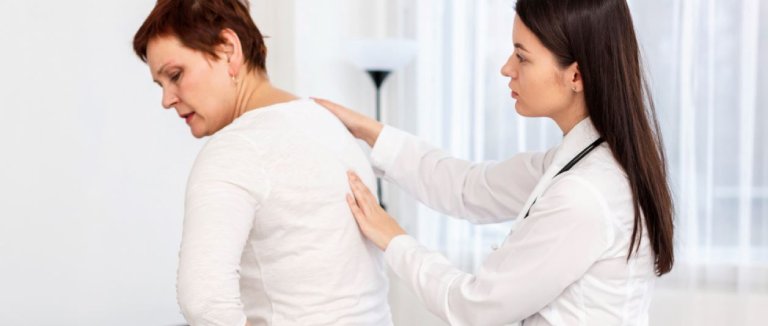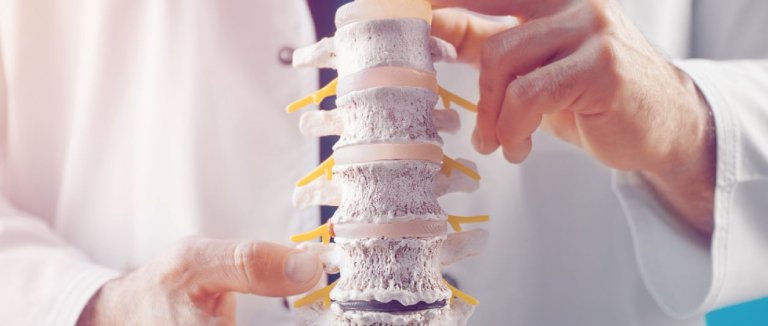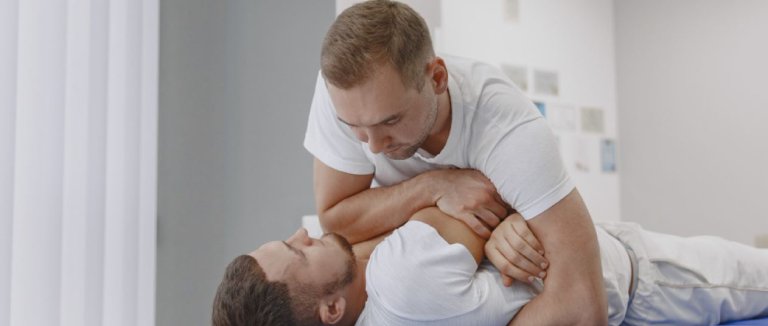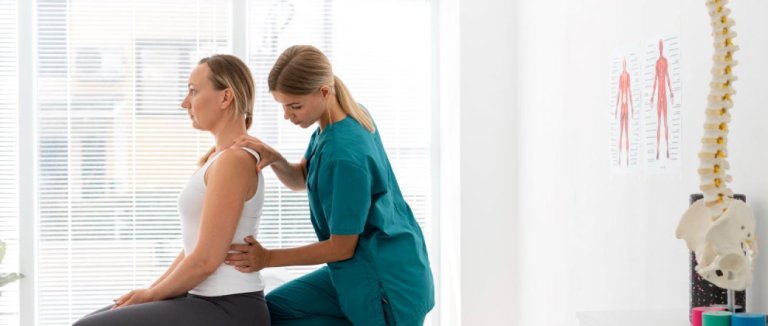Mild kyphosis may not cause much discomfort, but as the curvature becomes more pronounced, it can significantly impact quality of life. Kyphosis often develops due to daily habits and movements. To prevent this condition, it's important to maintain an active lifestyle and practice good posture. Proper spinal alignment is crucial for both physical and mental well-being. Taking proactive steps”such as focusing on posture and staying active”can help protect spinal health. If you notice any changes in your posture or have concerns about kyphosis, it's wise to consult with a specialist for evaluation and guidance.

What is Kyphosis?
Maintaining good posture allows the body to function efficiently with minimal strain. Poor posture, on the other hand, can cause muscles to contract unnecessarily and prevent them from working effectively. This can create imbalances in the skeletal system, often resulting in postural deformities”like increased curvature of the spine in both the lower back and upper back. People with these postural issues are more likely to develop chronic pain or injuries, especially when repeatedly placing loads on the same muscle or bone groups, such as during running or other repetitive activities.
Kyphosis Treatment
Pain from poor posture or kyphosis can affect not only muscles, but also joints, ligaments, and connective tissues. These problems are generally easier to treat during adolescence, while treatment can be less effective in adults if the condition has progressed and bone development is complete. Fortunately, non-progressive postural deformities often respond well to targeted exercises, which can reduce pain and improve symptoms.
Kyphosis Brace

In order to correct kyphosis and lordosis, the development of abdominal, hip, and back muscles is necessary. A balanced and regular exercise program can be established with exercises that can be applied in prone, supine, standing, and sitting positions. Positive results related to lumbar spinal curvature can be achieved by strengthening and mobilizing the body.
Even if individuals engage in controlled sports, they should not maintain a closed (lordotic) or upright (kyphotic) posture for extended periods until their muscles develop. This situation can lead to individuals experiencing pain during or after exercise, or even serious injuries due to incorrect execution of the movement. Therefore, until the muscles have developed sufficiently, it is advisable to continue exercising with the assistance of a supportive device while engaging in sports.
Kyphosis Treatment Aids
Treatment aids consist of medical and cosmetic products, which are referred to as kyphosis braces. These aids are divided into medical braces and cosmetic braces:
- Medical Braces: These are auxiliary devices designed to eliminate existing postural abnormalities in individuals concerned about their aesthetics and to reduce resulting pains. Since everyone's body type may vary, these braces, produced for medical purposes, are designed to be personalized to provide the best benefit for individuals due to differences in body type. For this purpose, medical braces include additional parts such as adjustment buckles, clips, closure straps, and belts to ensure compatibility with different body types. Medical braces have a flexible feature and contain wires in their supportive sections.
- Cosmetic Braces: These are auxiliary products designed for appearance purposes. They are determined based on the individual's appearance from the outside. They are designed to be thin and flexible to not be noticeable under clothing and to not hinder daily movements. Since they bring the posture to an upright (normal) position, they can also help alleviate pain caused by postural deformities. They are produced in standard sizes and assembled using a belt or clip.
Kyphosis Exercises

In studies related to posture disorders, exercises or physical activities performed by individuals according to their posture may be recommended as solutions to posture disorders, such as Pilates exercises.
Pilates exercise is an activity that can improve balance, flexibility, and muscle endurance. Everyone's body and psychological structures (weight, height, physical and psychological conditions, genetic characteristics, etc.) may vary. However, regardless of how the body and mental health are, the aim of Pilates exercise is to lead the individual to correct posture habits. Firstly, the movement analyses of the movements and positions in Pilates activities are examined, and the functions of the auxiliary element are aimed to be determined.
These movements are evaluated in 3 groups:
Balance and endurance, warm-up and cool-down, stretching and pushing.
Warm-up and Cool-down Movements Warm-up and cool-down movements consist of:
- Cat stretch
- Dog position (being on all fours)
- Side plank
- Heating and cooling of pelvic muscles (done before and after training to relax the spine.)
- Balance and Endurance Movements
Balance and endurance movements consist of:
- Sit-up
- Reverse sit-up
- Sitting (squat)
- Hip thrust
- Back arm and shoulder movements
Resistance and Endurance Exercises

Resistance and endurance exercises play a crucial role in improving flexibility and helping people perform everyday tasks with greater ease and safety. Machine-based pushing and stretching movements, such as those done with a reformer, are especially effective. In these exercises, the use of springs provides adjustable support”helping muscles grow stronger while reducing injury risk. For best results, these movements should be performed slowly and with proper form, typically while lying on your back on the machine.
Pilates Exercise
The formation of a gap in the lower back on the ground caused by posture disorders can lead to post-exercise pain. Therefore, it is important for the designed auxiliary equipment to support the back, spine, and abdominal muscles, be flexible to adapt to different postures, have features of clothing comfort suitable for use during exercise, and have a high level of technical and aesthetic design.
During Pilates exercise, movements are identified that simultaneously work the active muscles related to kyphosis and lordosis balance and can lead to injuries if not performed correctly. These movements are known as sit-ups, which support posture correction, and sitting movements, which balance the back and spine and help establish body balance with the support of abdominal muscles.
* Liv Hospital Editorial Board has contributed to the publication of this content .
* Contents of this page is for informational purposes only. Please consult your doctor for diagnosis and treatment. The content of this page does not include information on medicinal health care at Liv Hospital .
Visit Liv Hospitals.
Frequently Asked Questions
Information about kyphosis and lordosis disorders is provided. Below, you can find a wide range of information that users frequently ask about.
What is Thoracic Kyphosis?
An increased thoracic kyphosis is defined as having an angle greater than normal. There are many reasons for the increase in thoracic kyphosis. The cause of this kyphosis often occurs as a result of incorrect postural habits. Developmental anomalies (physical abnormalities), inflammatory diseases (inflammation, etc.), disc tissue degradation, trauma, etc., can also cause an increase in kyphosis. Increased thoracic kyphosis can be accompanied by weakening of the back's straight muscles, reduced degree of back stretching, postural changes, and pain.
What is Dorsal Kyphosis?
Dorsal kyphosis refers to a postural abnormality in spinal anatomy. The term "dorsal" represents the back region, especially the upper part of the spine. "Kyphosis" describes a natural curvature type that the spine normally has. Dorsal kyphosis means an excessive outward curvature in the upper part of the spine (thoracic region). The treatment of dorsal kyphosis depends on the underlying cause and the severity of the condition. Treatment may include physical therapy, exercises to strengthen the back muscles, and posture correction. In more severe cases, orthosis use or surgical intervention may be recommended.
Is Kyphosis Dangerous?
Kyphosis, which can negatively affect life both physically and psychologically, can reduce an individual's quality of life. This disease, seen in childhood, can lead to some diseases that need attention (heart and lung disorders). Kyphosis in adults can be life-threatening.
Which Department Deals with Kyphosis?
Since kyphosis is a spinal deformity, orthopedic doctors are typically consulted for the treatment of humpback.
How is Kyphosis Surgery Performed?
The goal of kyphosis surgery is to minimize the degree of curvature, alleviate back pain, prevent the progression of the curvature, and facilitate the patient's return to a physically and psychologically normal life. The process of kyphosis surgery varies depending on the patient's condition. However, it's crucial to take this surgery seriously. If needed, it should be performed without delay. The aim of this surgical intervention to correct spinal curvature is to stabilize the necessary vertebrae from the base of the skull to the lumbar curve.